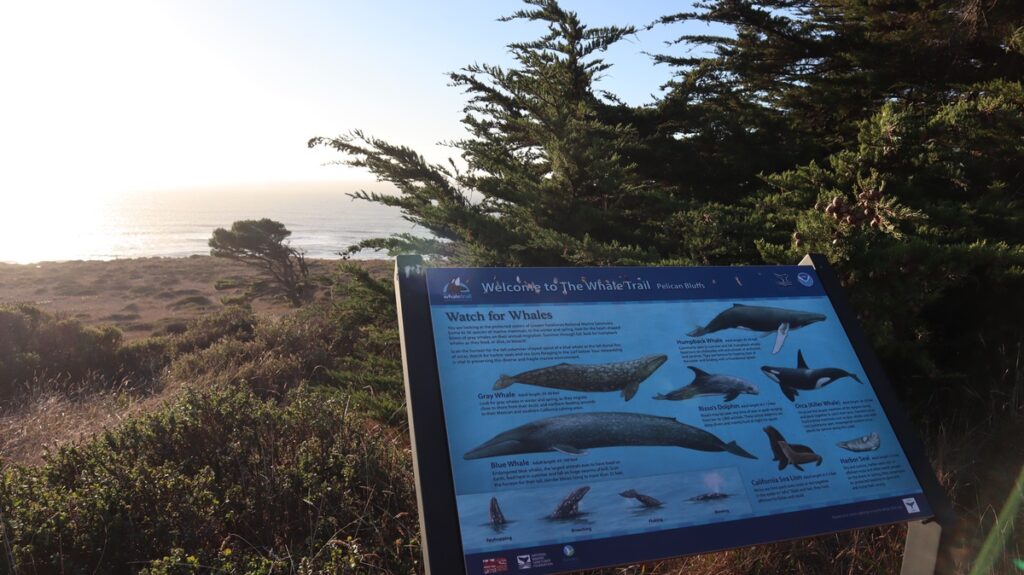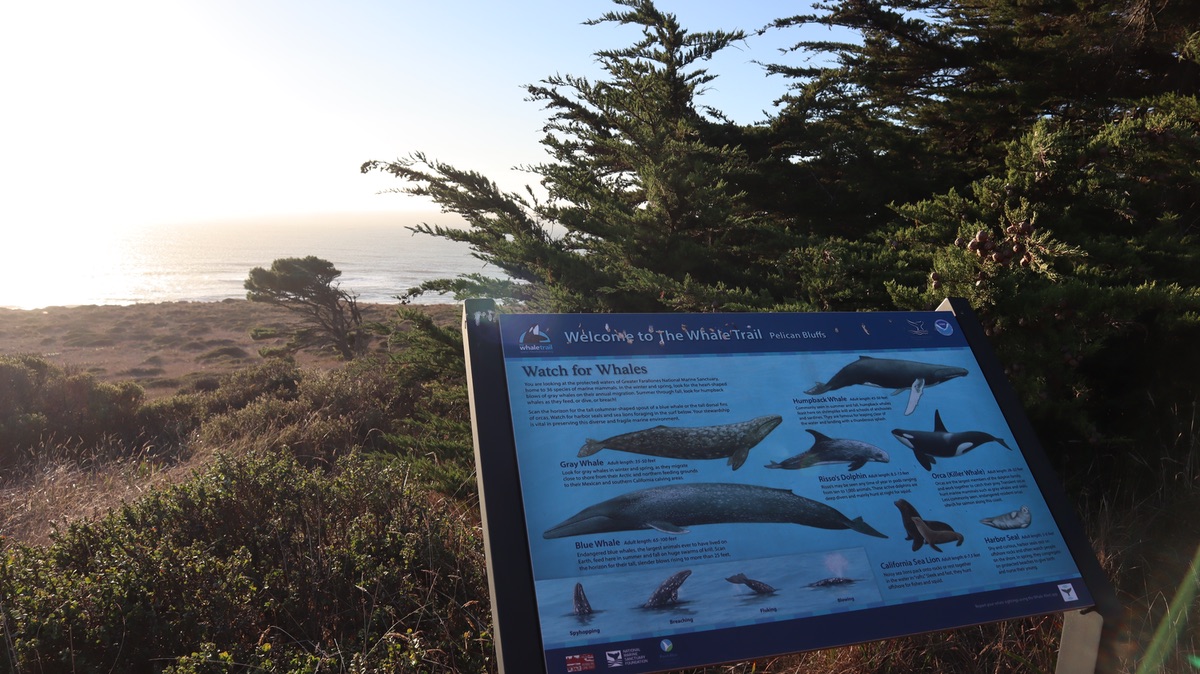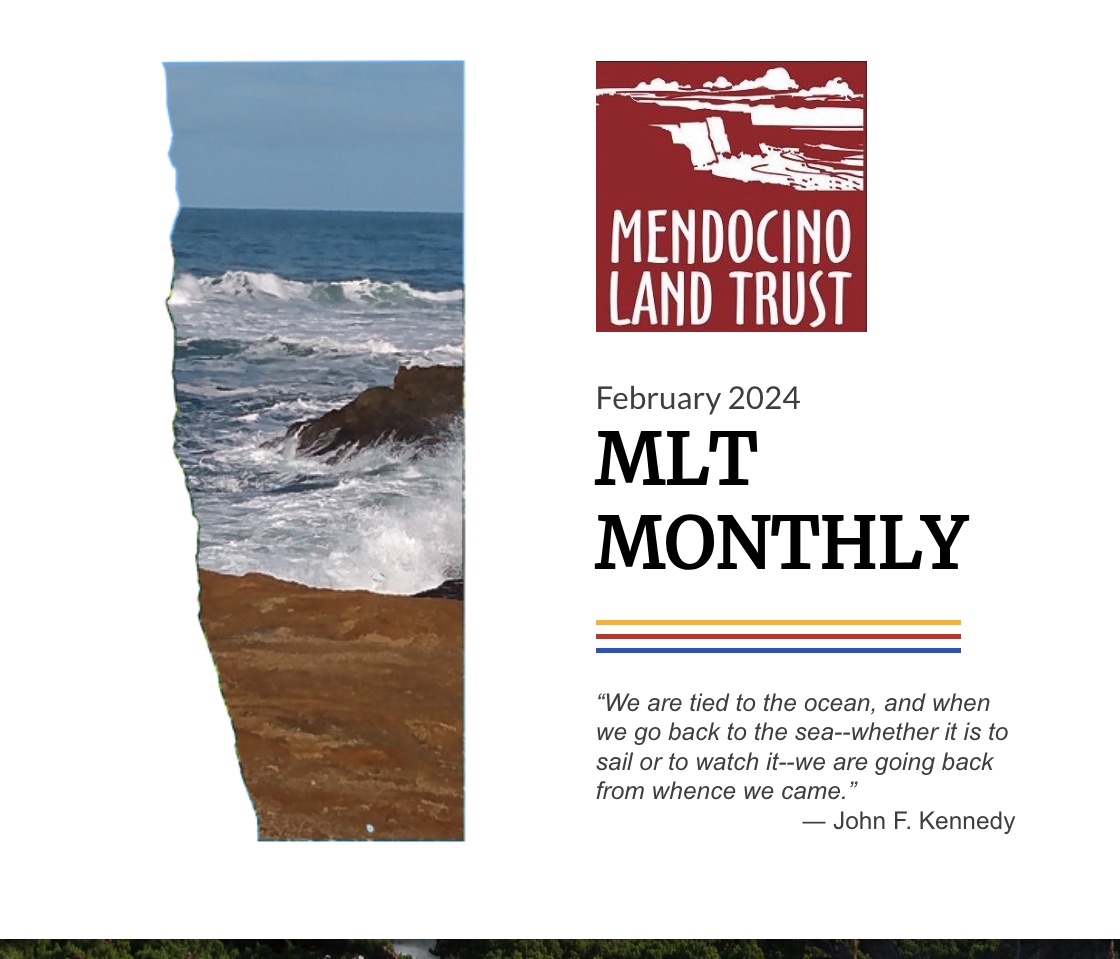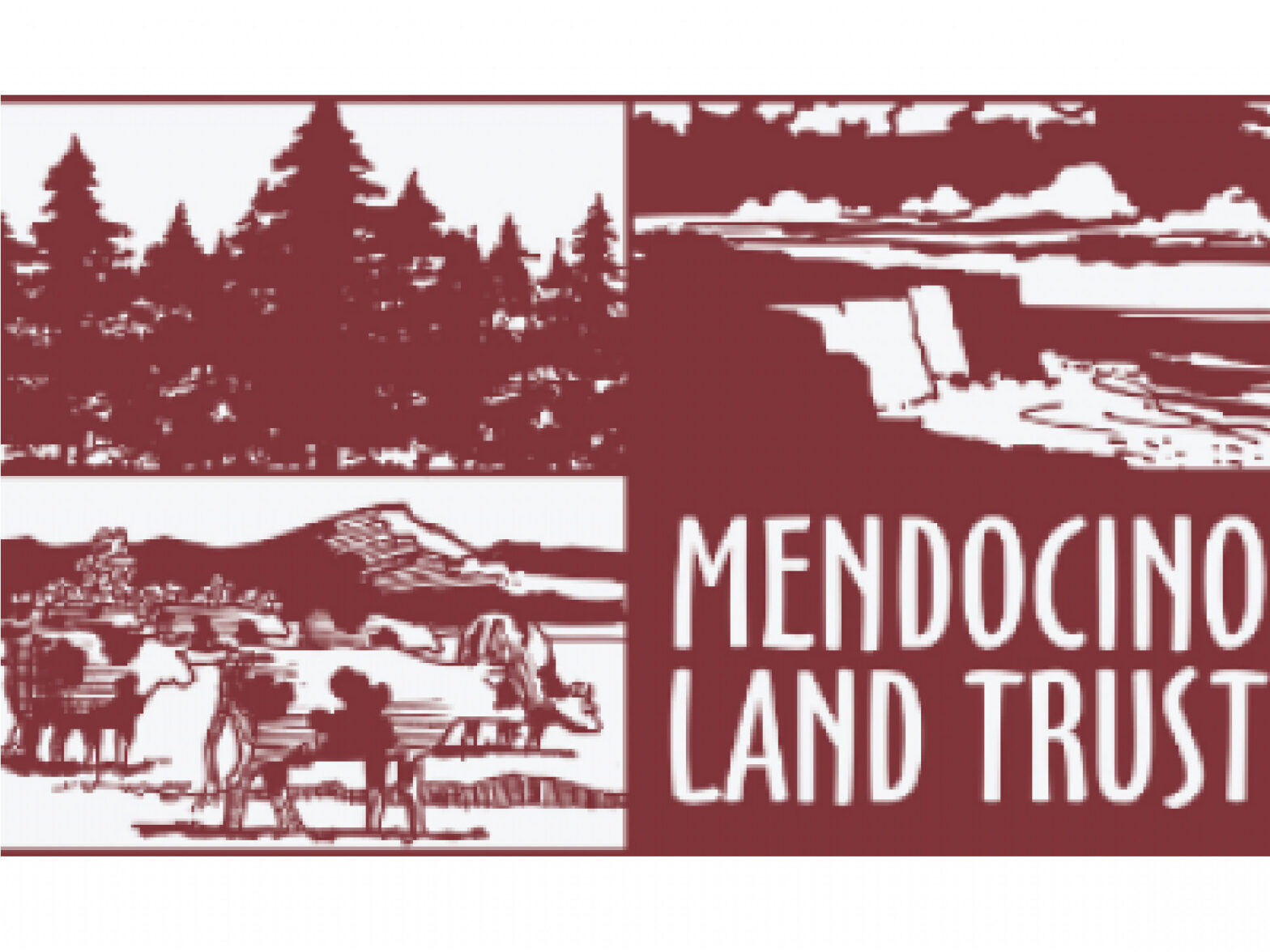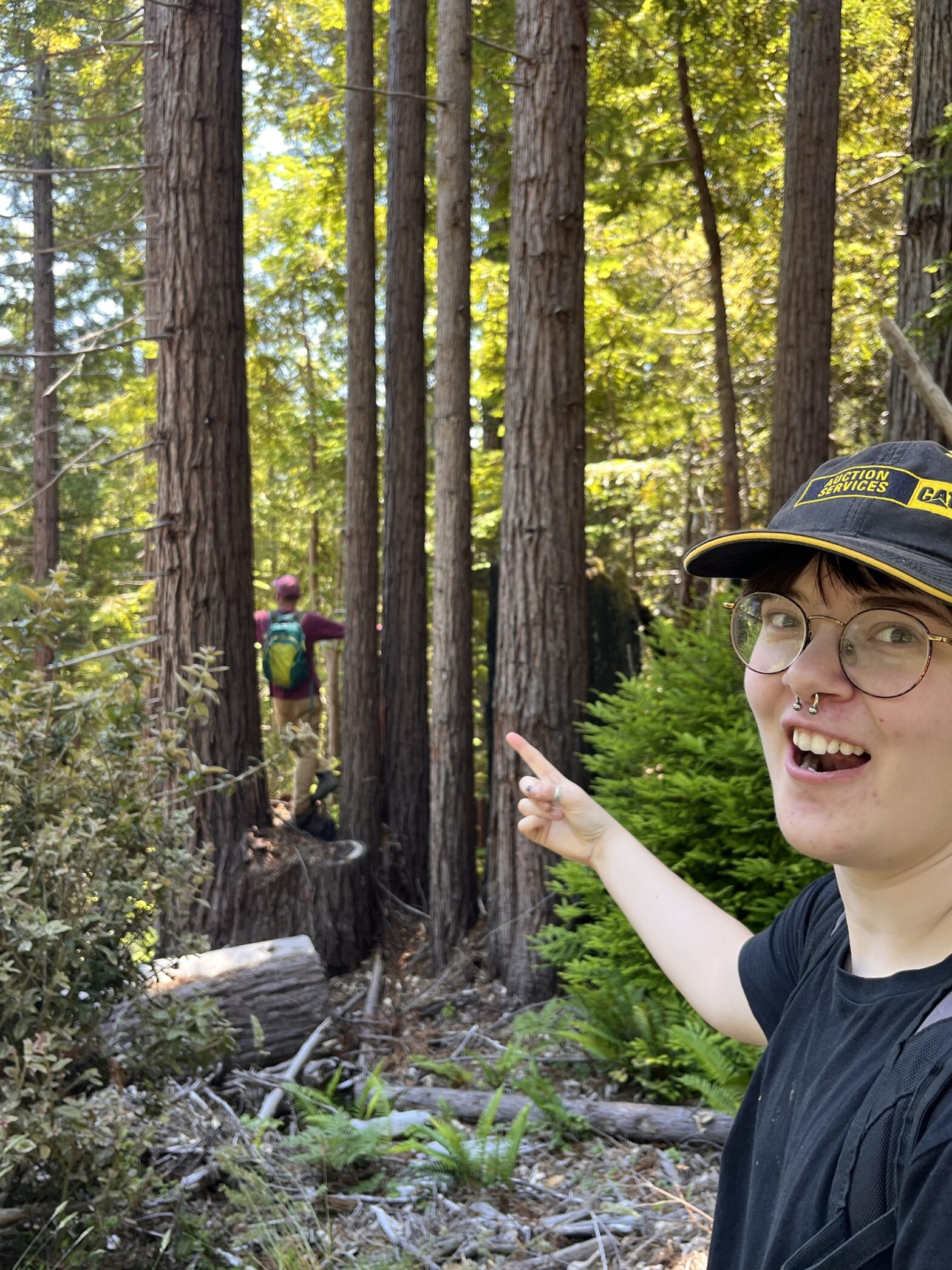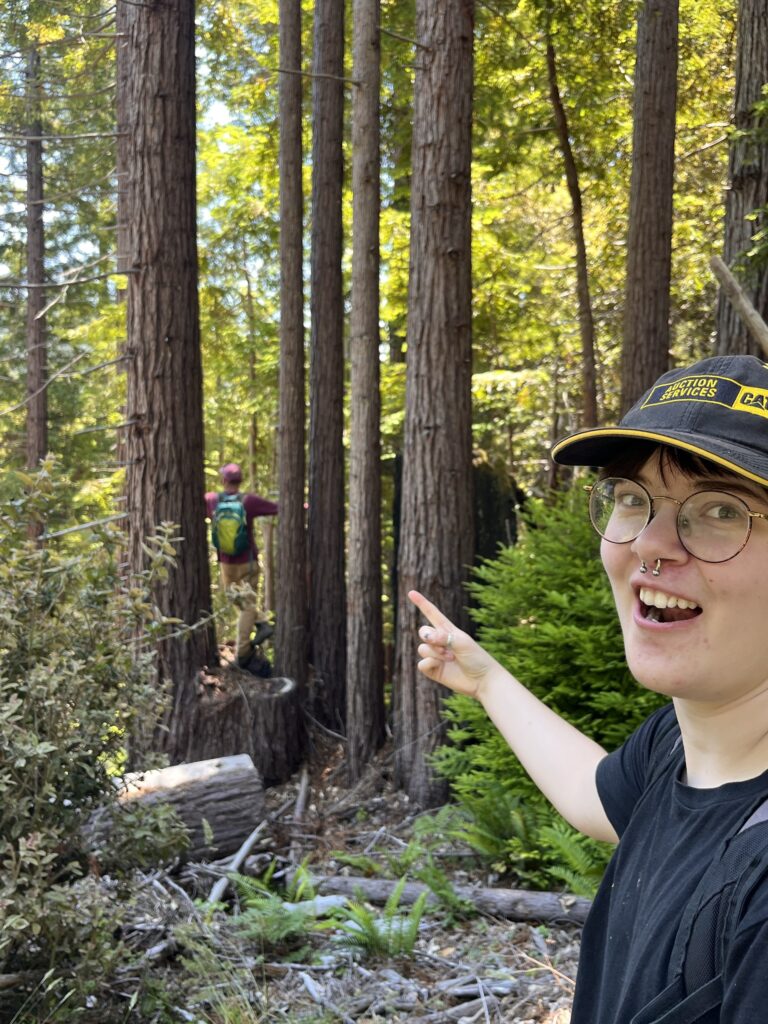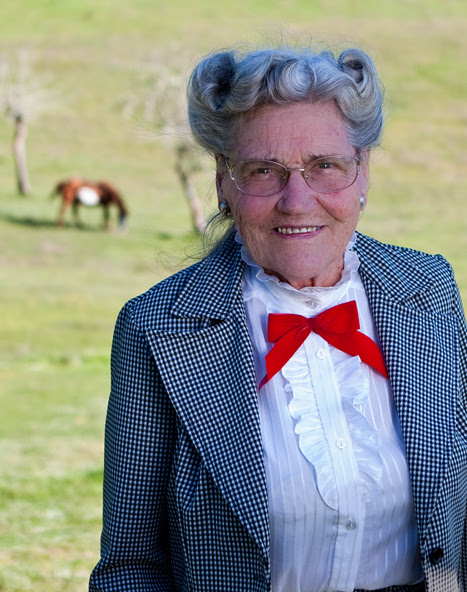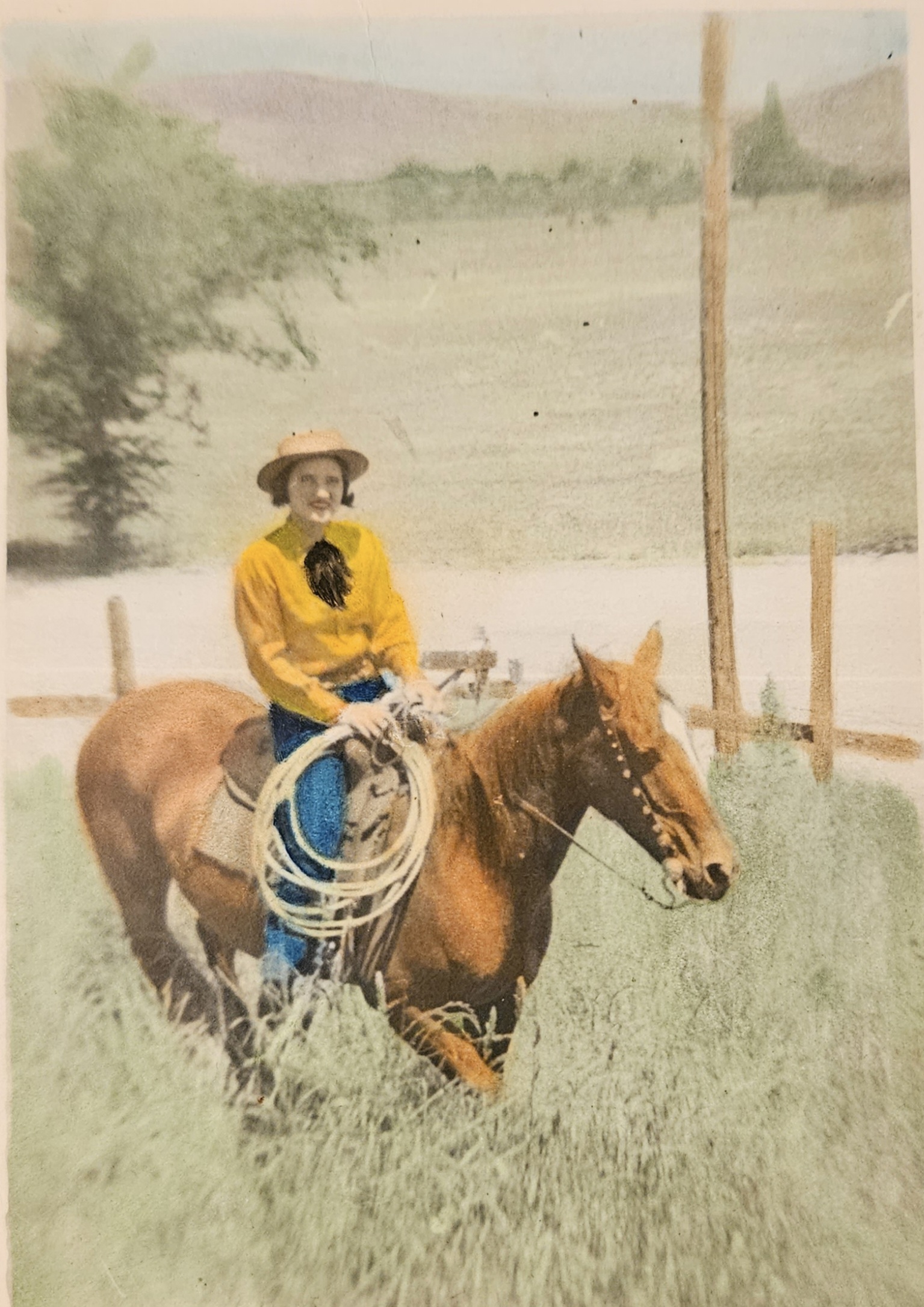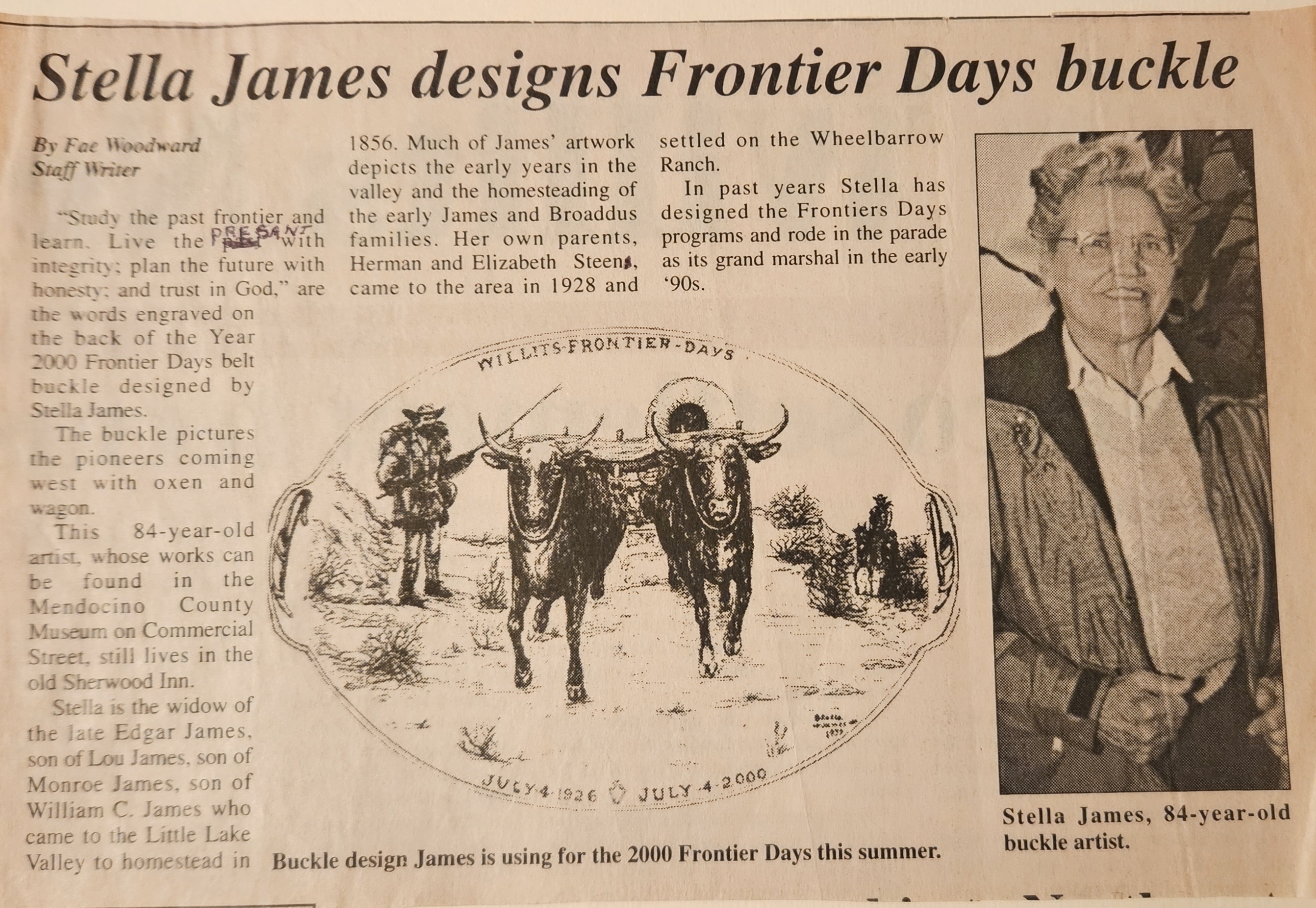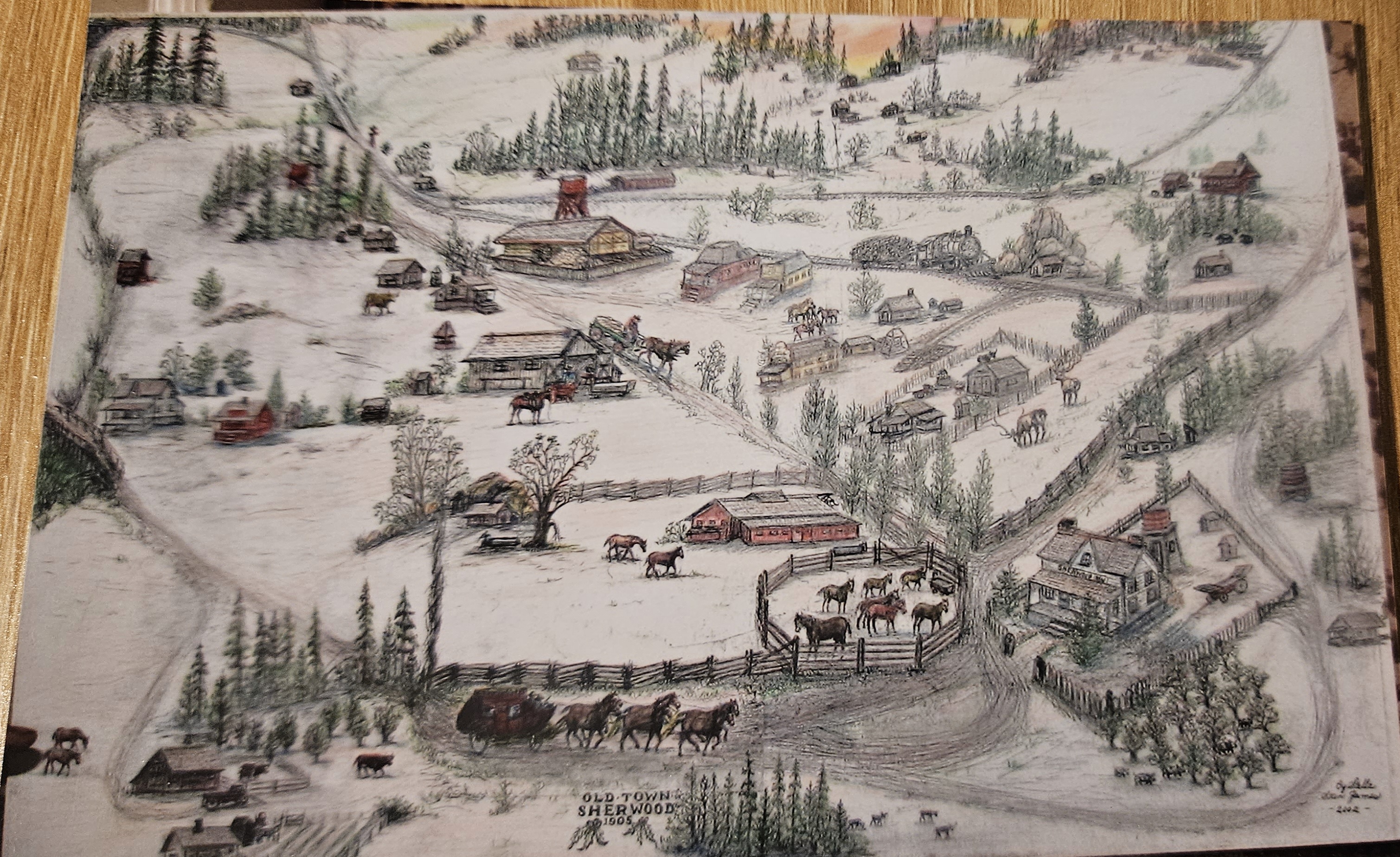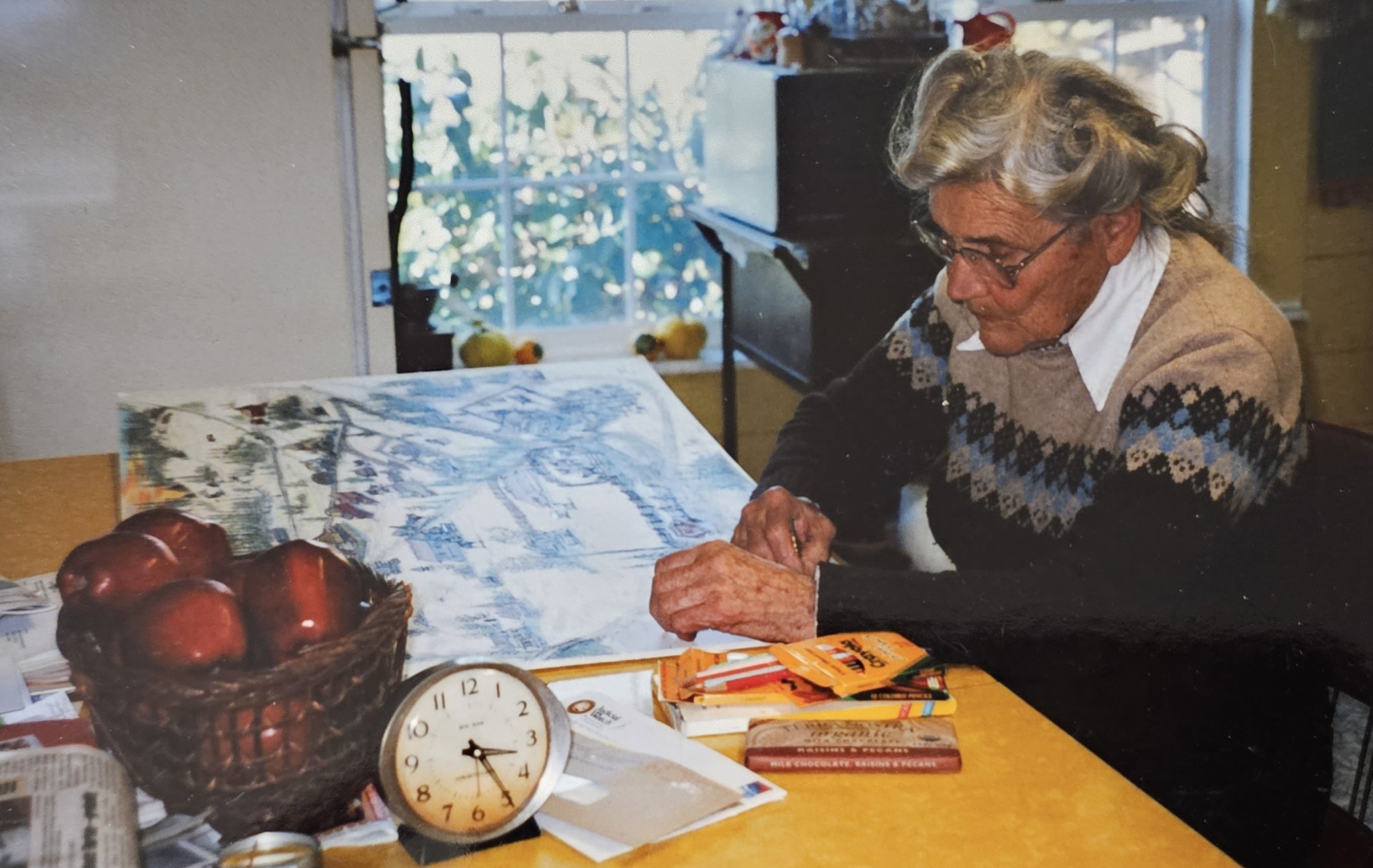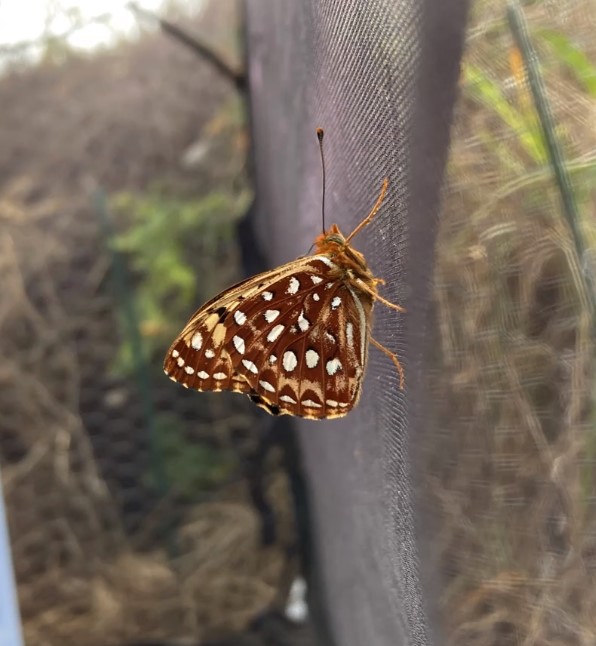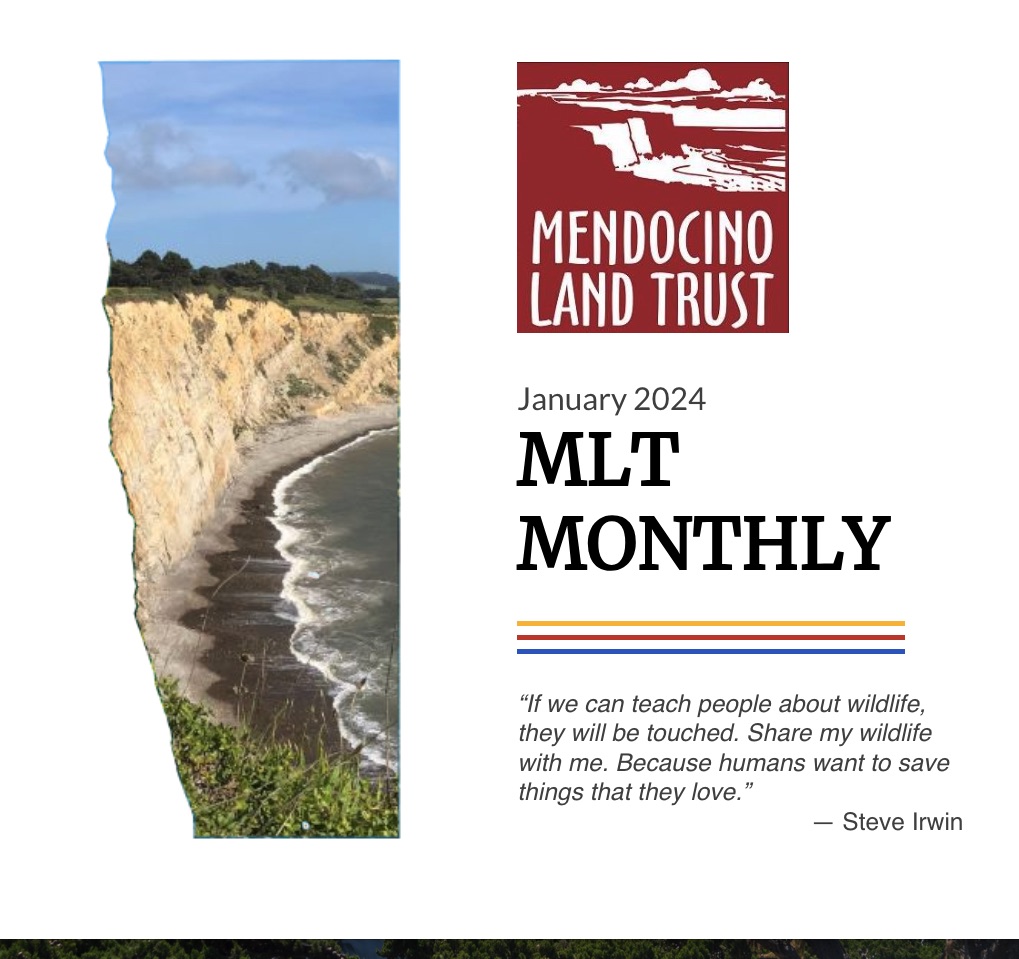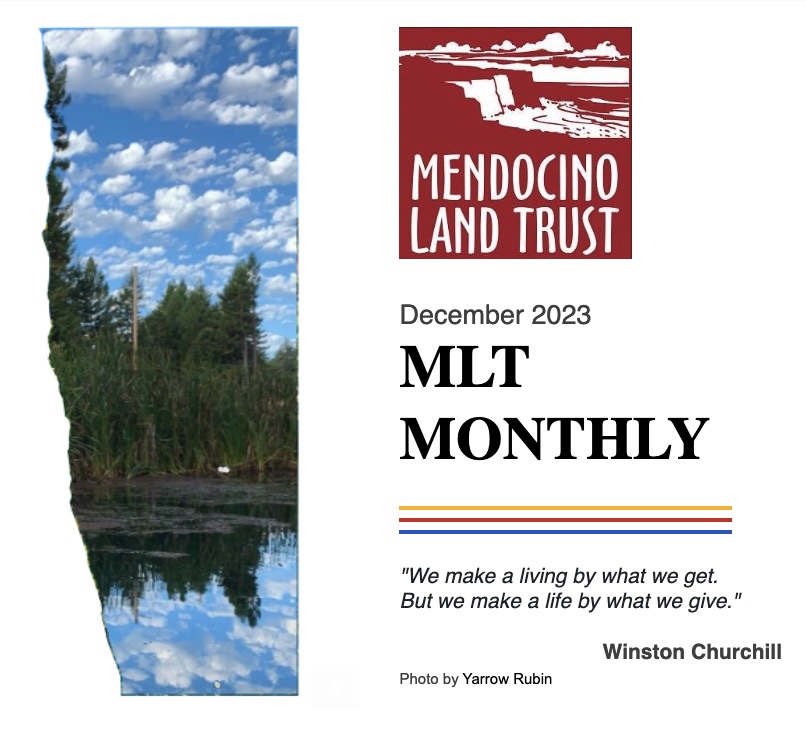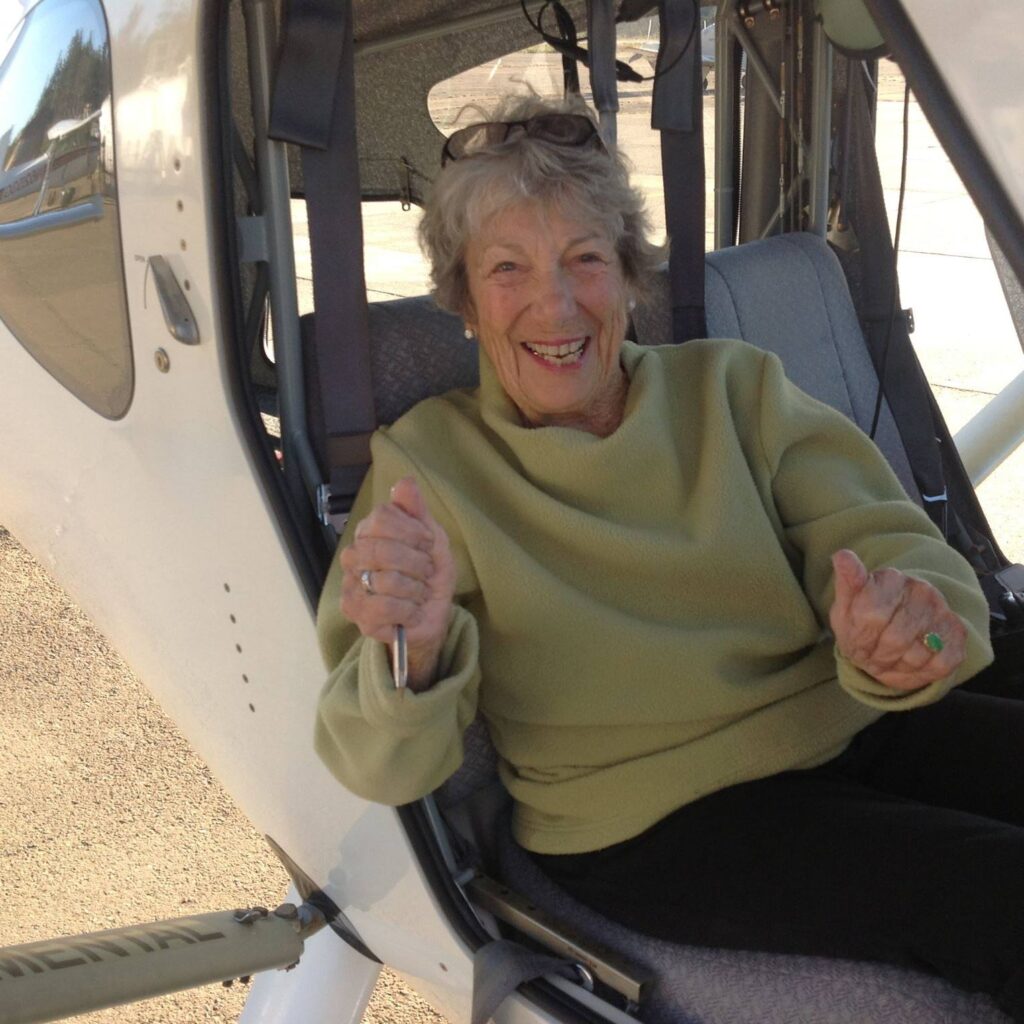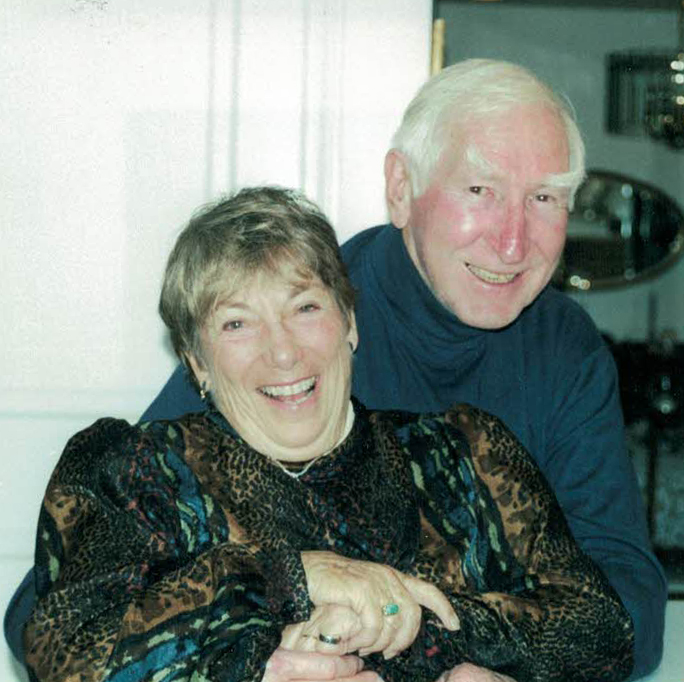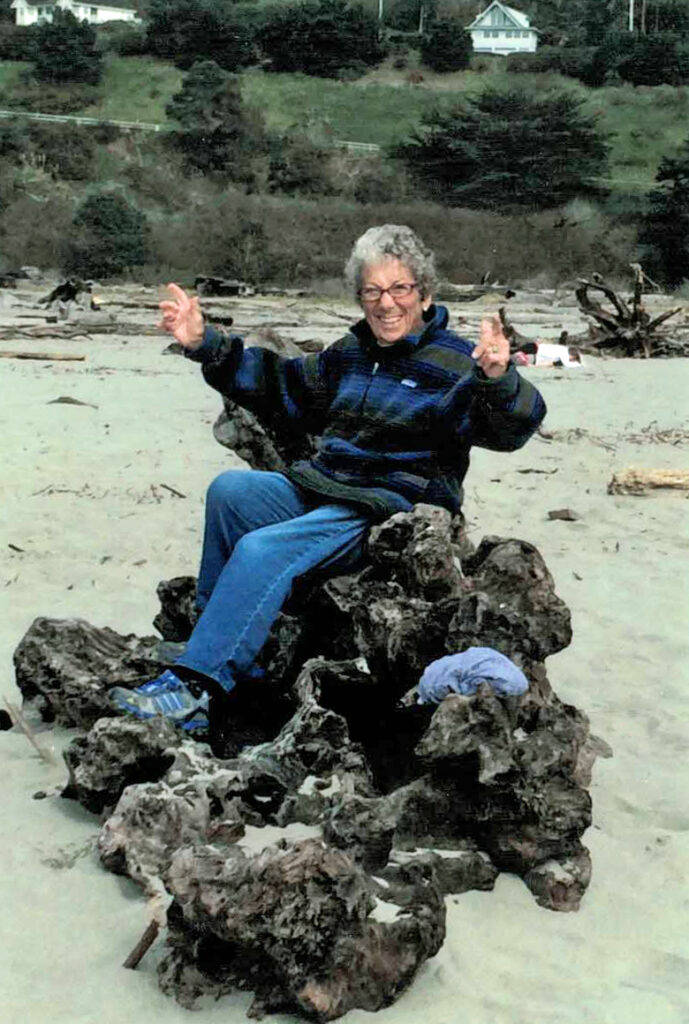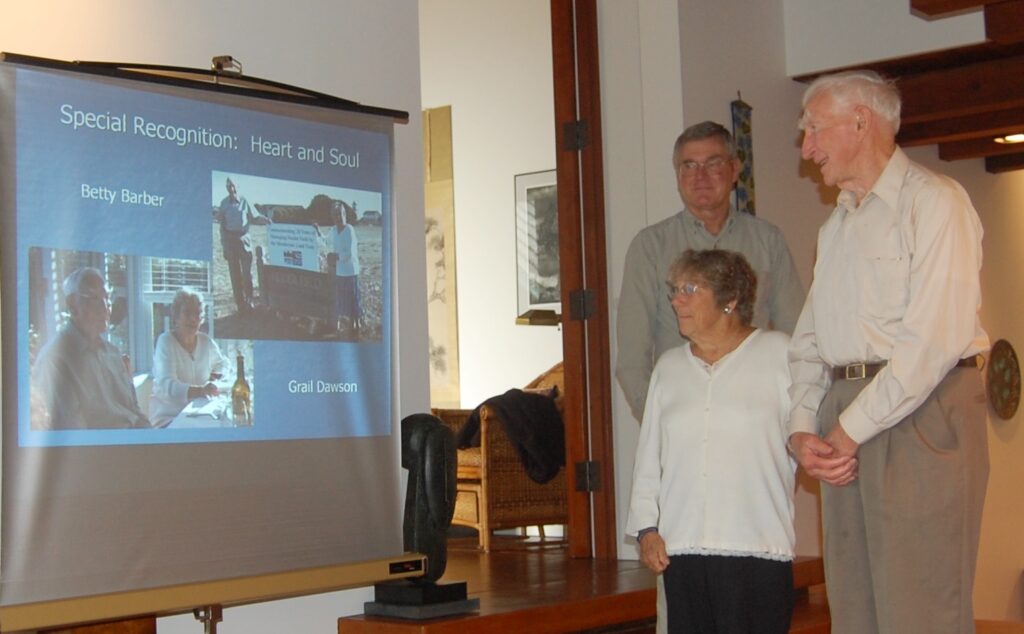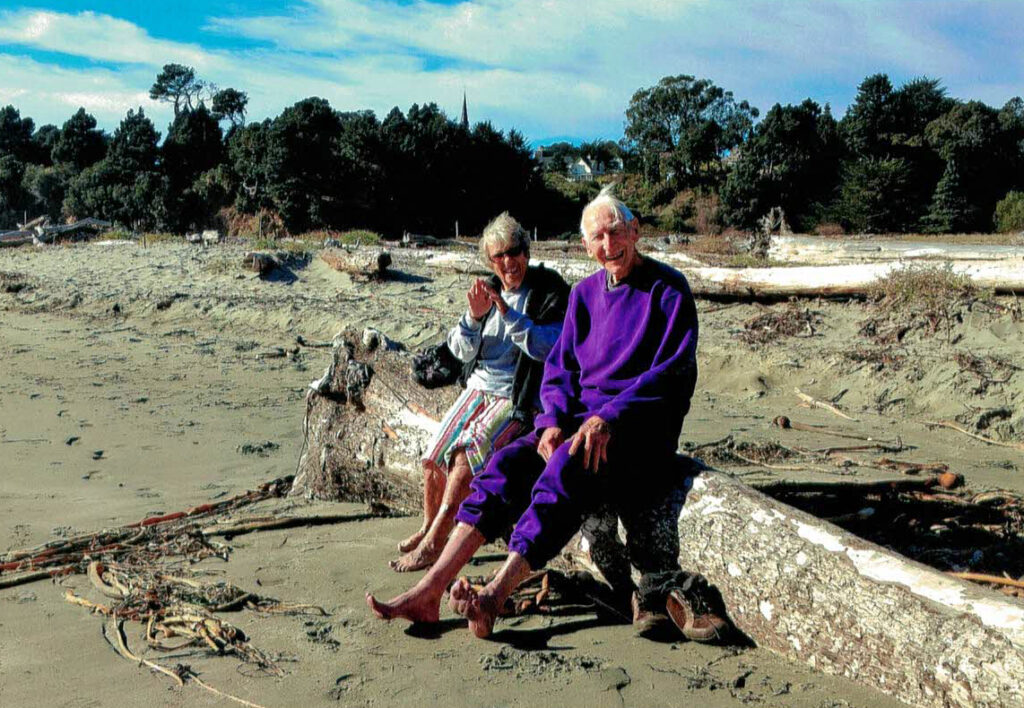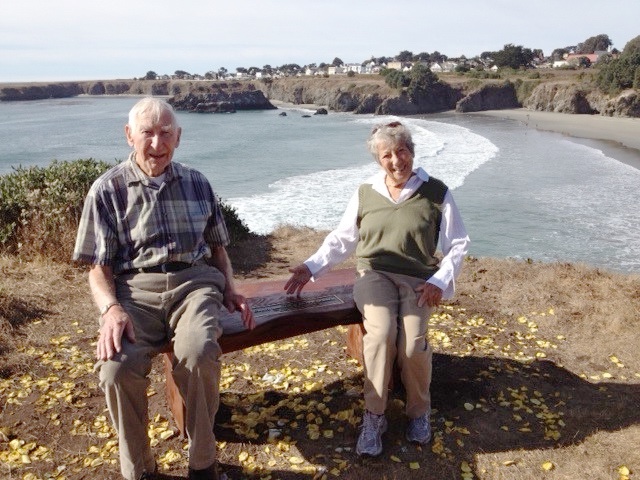MLT wishes to acknowledge its deep debt to Betty Barber, who passed on December 2, 2023.
She was 103 years old.
Betty was a visionary and dedicated conservationist who, along with her partner Grail Dawson, were essential players in the early days of MLT’s work. Their efforts set MLT on the path to become what it is today. It is impossible to overstate the importance of their contribution.
Grail passed in 2019.
In a radio interview back in May of 2020, Betty told KZYX interviewer Jim Culp that her interest in tennis led her to the Mendocino Tennis Club. In 1977, Betty arrived in town with a new car and a new sleeping bag to begin her life in Fort Bragg.
“I played tennis very early in my life and enjoyed it,” Betty said in this interview, “and I was able to be a teacher, a pretty good teacher. In fact, one of the reasons I moved up here was the Mendocino Tennis Club. I enjoyed my life then because of tennis.”
It was on those courts that she met the man that was to become a life-long partner, Grail Dawson.
“I did meet him (Grail) there and enjoyed playing with him. I didn’t always like the way he played, or some of the strokes that he had, but he was a good player and a good competitor. And we had a lot of fun.”
Betty and Grail not only played together, they worked, and worked hard. They fought poorly planned development that threatened the area’s environment, culture, and unique lifestyle.
In a June 2018 interview in the Mendocino Beacon, Betty recounted some of her early efforts. She and Grail worked together in radio as reporters for the Mendocino News Service. She became familiar with the people of Mendocino County by interviewing many of them. According to the Beacon, their efforts helped keep MLT together until there was money to hire a professional to run the non-profit.
Chet Anderson, a long-time MLT Board member, recalled his time with her. “Betty and Grail were the inspiration for me. Because of them, I saw the value of the organization (MLT). I had a small vision and innocence, I wasn’t even aware of all the possibilities.“
But this soon changed as he became deeply involved with the causes and campaigns of those times. Anderson retells the highlights below.
“Her personality was big, and she touched a lot of lives,” Anderson said. “They (Betty and Grail) came along at a time when MLT needed leadership and work, and they provided this.
“There are a lot of people who identify Betty with the Land Trust and the Land Trust with Betty. It’s hard when there is a couple to separate their work. Grail and she were partners and owned a home together. Grail was a bit more of a politician, an activist, Betty was behind him. There were two big coastal projects, one was at Navarro Point. Betty and Grail were very much involved.
“The other one that is important, south of Mendocino, overlooking the Bay. There’s a piece of land privately owned that had beautiful ocean views and ocean access. The people who owned it wanted to build a house on an adjacent property. They had no interest in coastal access or letting the public share it. But the Coastal Commission, when the owners went to get the permit, extracted something from them to approve the project. So, in this case, the Commission extracted a public easement. The owners then built a house overlooking Big River Bay.
“Now, the Coastal Commission can create an easement, but it has no meaning unless someone accepts the responsibility for it,” Anderson explained. “That’s what MLT did, and it’s the best viewing site of Mendocino Bay and the town of Mendocino.
“This easement and trail access entailed some controversy because the owner didn’t like that, even though they were getting the benefit of Coastal Commission approval. The owners actually sued the Land Trust, and this is where Betty and Grail got involved because MLT didn’t have money to hire attorneys. But Betty organized a dinner at the Cafe Beaujolais to hire an attorney. It might not have been necessary, ultimately, but we did prevail. The owner had to go away. It was still his land, but the easement remained.
“The dinner at the Cafe–from my perspective– was one of the most notable things Betty did. It set in motion the gradual, upward movement in terms of ability in terms of what we (MLT) could do and our reach…. Good hires, continual progress, outreach, projects, larger scope of the conservation easements. Not as sexy as acquiring Navarro Point, but they are an extremely important part of the project.”
Betty and Grail also were instrumental in acquiring and helping conserve the Big River Estuary.
All of this, and much more, happened because Betty and Grail were among the leaders of a group dedicated to conserving the land and providing public access. These two embodied the core mission of MLT. MLT is today, what it is, in no small part because of the dedicated work of Betty.
And, by all accounts, Betty also had a long and satisfying life all along the way.
In the radio interview, celebrating her 100th birthday, she said that she found satisfaction in “having friends, having fun, and being able to laugh. … I live in an incredible area, and I have had the love of two fine men in my life,” she said. Her advice on reaching a ripe old age is worth noting, too.
“Drink a lot of water. Try to eat good. Try not to get too impatient. Try to control some of the negative things, and just go on being lucky.”
Betty was, herself, lucky–a woman loved and admired by many.
She will be missed.
If you would like to remember her in meditation, we suggest you head out to one of Betty and Grail’s favorite spots, the Mendocino Bay viewpoint, where MLT erected a bench in 2012 in honor of the two of them. Click here for information.
